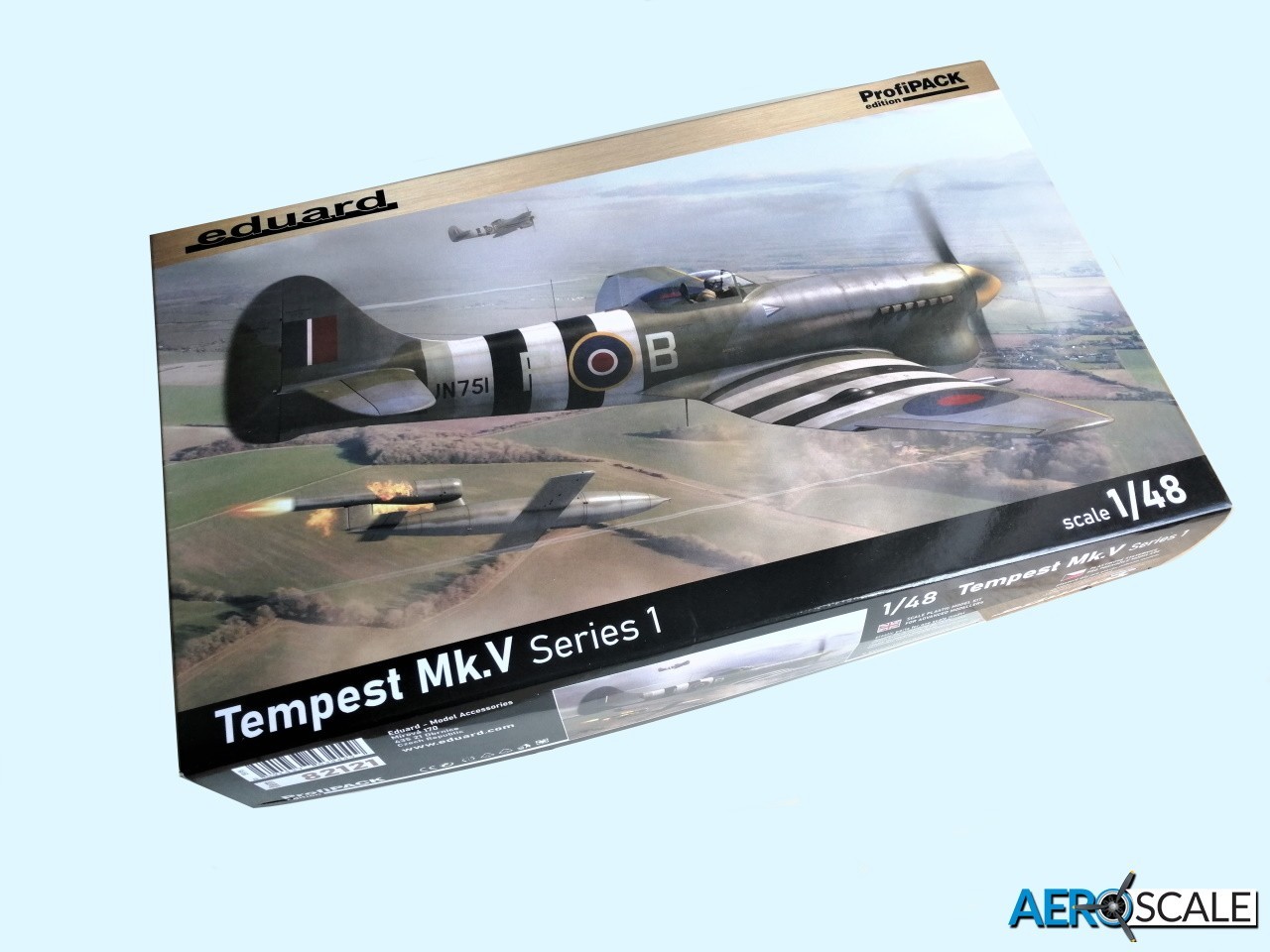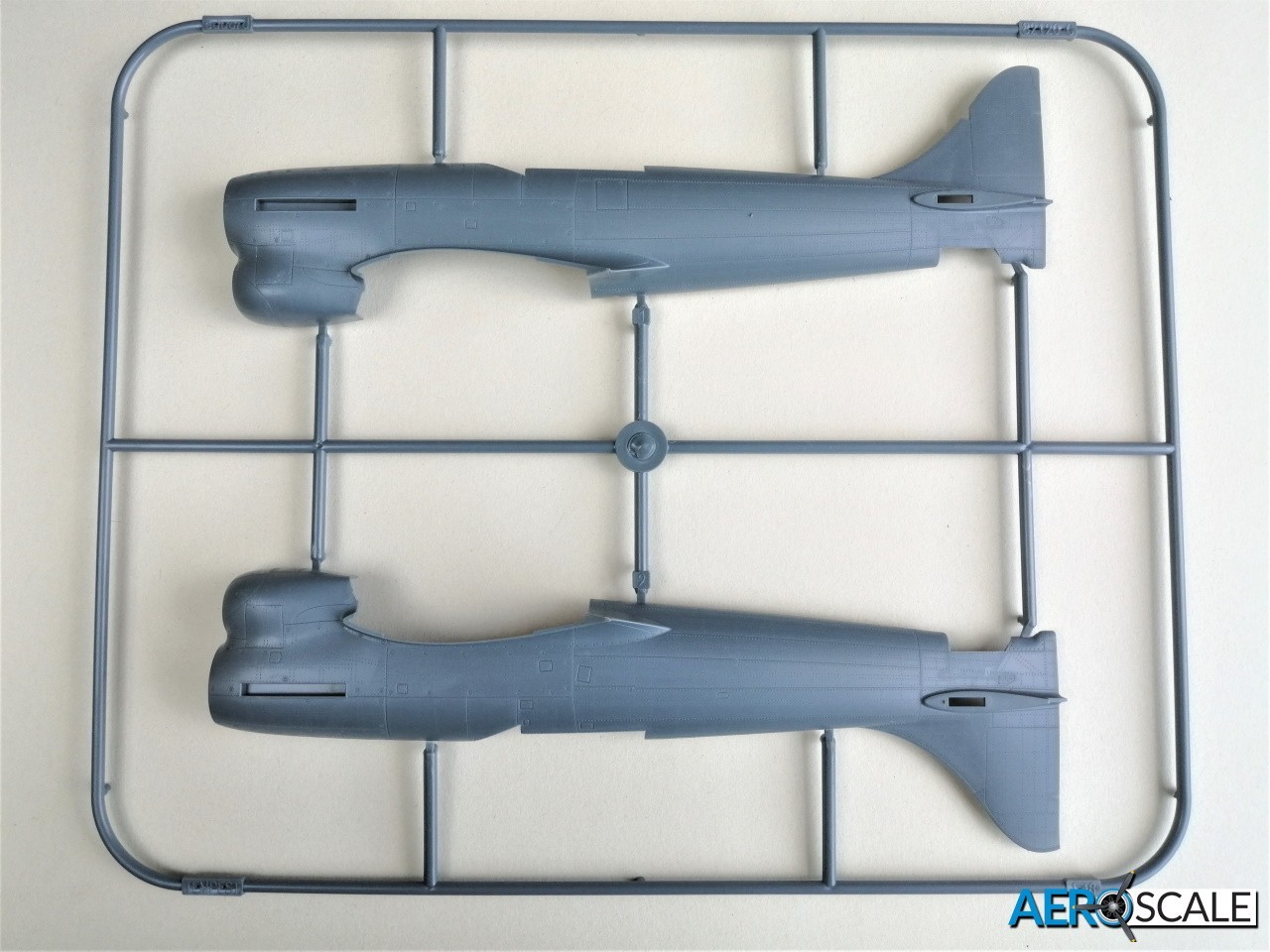
Background
It’s often called the ultimate piston engine fighter a title that is probably shared with its very close relative the Sea Fury.Originally called the Typhon II, the Tempest was the result of a need to improve the Typhoons performance at altitude. Hawker believed that the introduction of a laminar wing into the design would solve the deficiency at altitude making it a more versatile fighter. Unfortunately like the Typhoon it was disappointing at high altitude, but excelled nearer to Earth. Despite the disappointing performance at altitude the Tempest proved to be an extremely effective combat aircraft with its excellent range with fuel tanks, speed, outstanding roll rate and great visibility from the cockpit. It carried a considerable punch with four wing mounted 20mm cannons and ability to carry up to 2000lbs of ordnance. The Tempest was typically fitted with two 1000 lb (450 kg) bombs or eight 60 lb (27 kg) rockets. When fitted with under wing fuel tanks, the Tempest could loiter for up to 4.5 hours. It was feared by all that was within its range of operation whether ground targets or the emerging jet powered aircraft. Hubert Lange, a Me 262 pilot, said: "the Messerschmitt Me 262'smost dangerous opponent was the British Hawker Tempest — extremely fast at low altitudes, highly manoeuvrable and heavily armed."

There were two Series of Tempest Mk.V and the first Series had the serial number prefix JNxxx, useful to know if you are doing some photographic research. The fuselage/tail joint originally featured 20 external reinforcing"fish plates", similar to those fitted to the Typhoon
Opening the box it’s a little disappointing and unlike Eduard to place all the grey sprues in one bag. Once you carefully extricated the sprues it’s immediately obvious how good the mouldings are and the quality of the detail. Eduard seem to be leading the way in creating fine panel lines and detail. This particularly moulding was originally released in 2019, but don’t confuse this with Eduards original Tempest release [8021/2/4/5 & 1169]. It pops up on eBay fairly frequently. All the marking options are the same for the initial release.
Contents include:
- 5 x grey platic sprues
- 1 x clear plastic sprues
- 1 x small fret of pre-coloured photo etched items
- 1 x paint masks
- 2 x sheet of decals
- 1 x A4 20 page instruction manual.
The cockpit area is made up from around thirty plastic parts and almost the same number of photo etched parts. There is additional raised detail on the inside of the fuselage in the cockpit area as well as in the tail wheel well. As is the norm with Eduard ProfiPACK editions you have a choice of how you represent the instrument panel and side consoles. You can use the pre-coloured PE parts supplied, use the excellent detail moulded on the plastic parts or use the decals. Seat harness is included on the PE fret. Thereis a wealth of detail to be found with the parts supplied, more than enough for most modellers.
The canopy is beautifully clear and the separate windscreen means you can display the canopy open, so you can better see the cockpit detail Eduard has gone to great lengths to supply you with. The canopy is fitted onto a grey plastic sill
The fuselage comes as two halves; thankfully Eduard has decided not to complicate things by including open panels. This being a Tempest Mk.V Series 1 means there are twenty strengthening plates to attach between the fuselage and tail unit. Eduard has chosen to represent the plates with twenty one photo etched parts [yes there is a spare]. The parts for the chin radiator number eleven plastic parts. The detail on the radiator faces is exquisite. The exhausts look good, there are two pipes blending into flattened exhaust outlet.The rather large four bladed prop is made up from three parts. The rudder is separate and has noticeable raised lines to represent the rib tape as the rudder frame was canvas covered.
The lower wing is a full span one piece part. The two upper halves of the wing have some good raised detail in the roof of the wheel bay. There are six parts forming the walls of each bay and parts for the retraction gear. The ailerons are separate and presumably positionable. The elevators are separate and are also one piece. There are partly formed holes that need to be drilled out of you cant resist fitting the included rockets.
The tyres of the main undercarriage have Dunlop moulded onto the walls. Hubs are separate and look very good, and there are masks for them too. The main landing gear legs are one piece as is the complex looking activation arm and they are impressively detailed as are the inside of the gear doors. I did find there was an issue here, when building the Series 2. The legs are well detailed and pretty robust and take the weight of the model by themselves. The inside of the bays will look impressive once it’s assembled.The anti-shimmy rear wheel and oleo are made up from four parts.
Armament consists of the 20 mm Hispano Mk.II canons with the long barrels attached to a small section of the leading edge. Not sure why this is separate, but it will spoil the look of the leading edge if you don’t blend them in correctly. Even though there are two types of rocket projectile provided: with rails or without, this release does not use them. Also missing are bombs or drop tanks. There are preformed holes in the lower wing if you can’t resist installing the rockets. Though I have a feeling the early Tempest V’s were rarely fitted with external ordnance.
There are masks for the windscreen and canopy as well as the wheel hubs, wing root walkways along and the ID lights.
The two sheets of decals are printed in house and as you would expect the quality is superb. There are no wing or fuselage stripes included. There are quite a few stencils to apply and there is a guide in the instructions
There are six marking options with this releaseincluding:
- JN766. No 486 [RNZAF] Squadron, RAF Castle Camp, England,April 1944
- JN751, W/Cdr Roland P. Beaumont, DSO, DFC & bar, CONo,150 Wing, RAF Bradwell Bay, England, April 1944
- JN755, No. 3 Squadron, Newchurch, England, May 1944
- JN751, W/Cdr Roland P. Beaumont, DSO, DFC & bar, CONo,150 Wing, RAF newchurch, England, June 1944
- JN763, No. 486 [RNZAF] Squadron, Newchurch, England, June1944
- JN765, No. 3 Squadron, Newchurch, England, June 1944
All the marking options are painted dark green with ocean grey on the upper surfaces with medium sea grey on the under surfaces. Options‘A’ and ‘B’ featuring the pre-D Day [four black] stripes under the wings that helped identify the Tempest as friendly over the south of England. Options ‘D’,‘E’ and ‘F’ have D-Day invasion [two black] stripes added.
The A4 sized twenty page instruction booklet takes you through the build process clearly. Gunze Sangyo and Mission Paints are used for reference, but it is simple enough nowadays to cross reference these with your favoured paints.
Conclusions
Its great to see the mighty Tempest from Eduard again even if it is a very limited release. It would seem to be a pre-lude for the release in August of the Centaurus powered Tempest Mk.II in August. The quality of the recessed and raised detail is exemplary and the amount of detail included in the cockpit and main wheel wells is superb. There is a myriad of after market detail sets to go with this release, check them out here:
https://www.eduard.com/eduard/tempest-mk-v-series-1-1-48.html
82121 - Tempest Mk. V series 1 - 1:48
Our thanks to Eduard for sending the kit for review.
Please remember, when contacting retailers or manufacturers, to mention that you saw their products highlighted here – on AEROSCALE.

